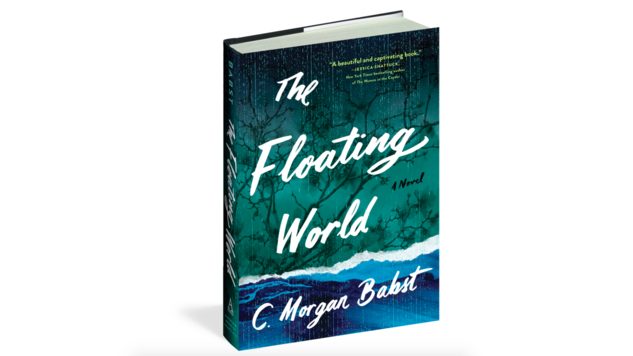In The Floating World, C. Morgan Babst Attempts to Write the Novel on Hurricane Katrina
Books Reviews C. Morgan Babst
In The Floating World, C. Morgan Babst’s ambitious debut novel, the past is a spiky thicket; untangling it, setting it right again, is the task that the writer has set for her characters and herself. The novel, which takes place in the immediate aftermath of Hurricane Katrina’s devastation on the city of New Orleans, follows the Boisdoré-Eshlemen family as they seek to put their lives back together again.
Each of The Floating World’s characters is wracked with some internal agony. Adelaide—Del, as she is known to her family and friends—is the accomplished older daughter of the Boisdoré clan who abandons her friends and her job in New York City in order to move back home and help her family deal with the hurricane’s aftermath, though it’s not clear that anyone actually wants her help. Cora, Del’s younger sister, refuses to evacuate the city and rides out the storm with a co-worker, Troy, a decision that destabilizes her already-fragile psychological state. Tess, their mother, is a white psychiatrist who hails from an upper-class background. She and Joe, their father—a sculptor who hails from a long line of black craftsmen and artisans—split up after evacuating the city and leaving Cora behind. Meanwhile, Vincent, Joe’s father, is falling into the dementia and paranoia of the Lewy Body degenerative brain condition.
In The Floating World, the storm works as a catalyst, a trigger for the Boisdoré clan’s deep-rooted traumas. Tess and Joe’s separation causes Joe to reflect on the inequalities baked into the origins of their relationship and Tess on her tendency to put everyone else first; Del’s return unleashes a torrent of angst about her role in the family line; Cora’s mental illness, controlled and tucked away for years, re-emerges with a vengeance.
There are moments of great beauty and power in the book. Babst succeeds in tracing New Orlean’s social and racial divisions to their root, providing withering commentary on a murderously oblivious white upper-class that still uses words like “octoroon” in polite society. She is also a particularly dexterous writer, weaving from past to present in the course of a single paragraph or sentence without losing steam or distracting the reader. The density of the book’s prose works to mirror in her characters’ tangled thoughts the devastated physical world of New Orleans after the storm; the house Cora and Del grew up in—part of Tess’ inheritance—is considered to be on high ground, yet it too floods. Everywhere the characters turn, what the characters once took for granted is turned upside down, rent apart by hundred-mile-per-hour winds.
Yet there is an unfortunate side effect of treating the storm as an enormous metaphor. In granting the storm such symbolic weight, Babst tends to ignore the enormous material cost the storm—aided and accelerated by human interference and negligence—wrought on the lives of New Orleanians, particularly its black residents. The book contains only glancing references to the horrors that descended upon the city after the levees broke, when police, national guardsmen and white vigilantes killed and threatened untold numbers of residents under emergency powers declared by then-Governor Kathleen Blanco and President George W. Bush; nor does it consider the plight of the tens of thousands of refugees crammed and forgotten in the Superdome and the New Orleans Convention Center. These omissions are jarring, especially given the sheer heft of the novel, its love for the smallest detail.
It’s almost as though Babst, realizing the storm was too large to adequately represent in a single novel, decided to turn the storm into the overwrought backdrop upon which she could set a series of smaller, more manageable tragedies. For the purposes of The Floating World, the real storm may as well have never happened at all.
Lucas Iberico Lozada is Paste’s Assistant Books Editor. You can follow him on Twitter.